Ireland’s young minds tackle big environmental questions at the BT Young Scientist

[cs_content][cs_section parallax=”false” style=”margin: 0px;padding: 45px 0px;”][cs_row inner_container=”true” marginless_columns=”false” style=”margin: 0px auto;padding: 0px;”][cs_column fade=”false” fade_animation=”in” fade_animation_offset=”45px” fade_duration=”750″ type=”1/1″ style=”padding: 0px;”][cs_text class=”cs-ta-right”]12th January, 2017[/cs_text][cs_text]A short stroll around the displays of the BT Young Scientist can assure us that the future is in good hands. The exhibition has been running for 52 years, making it one of the longest running events of its kind in the world. Initially a modest event, 1142 students are competing this week with a total of 550 projects. Of these, 159 fall into the Biological & Ecological Sciences category.
With each and every project the quality of work was astounding. I spoke to a small cross-section of researchers about their work.
Investigating the link between habitat and the antibacterial effect of honey. Molly McConnell and Holly King, South Eastern Regional College Bangor Campus, Down.
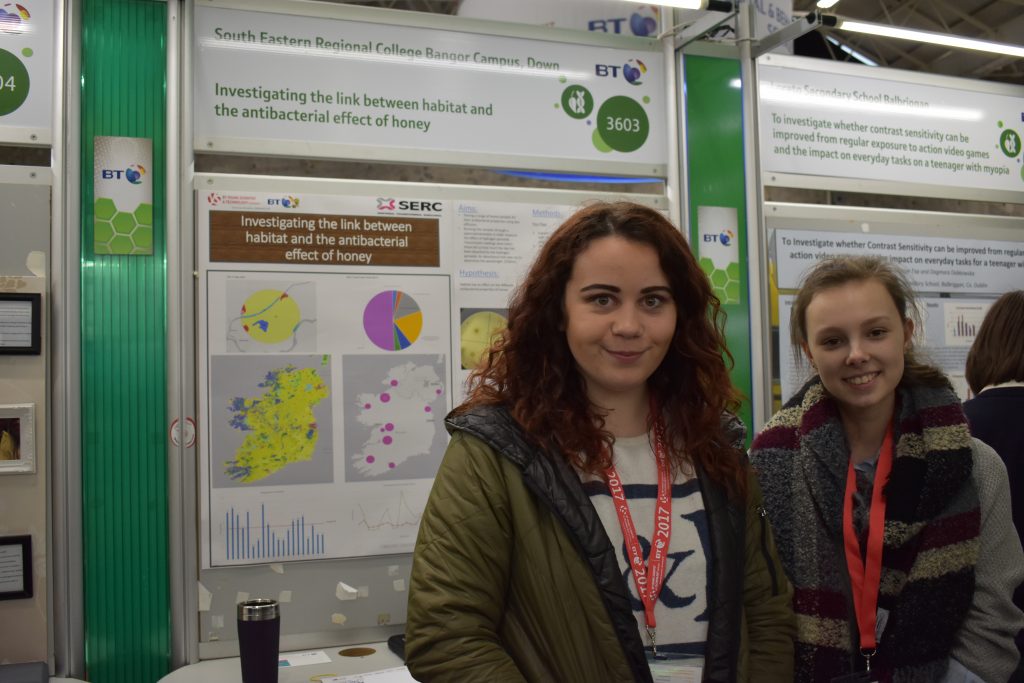
Tell me about your project?
This project was inspired by previous research in the College that showed non-treated honey had a higher antibacterial score than shop-bought, treated honey. We decided to test if habitat affected this. We contacted beekeepers around the country in different habitats for samples of honey from their hives and then tested the reaction to bacterial colonies on agar plates.
What were your findings?
We found that honey from forest and peatbog habitats had the strongest antibacterial properties. Essentially the lower the urban density of an area the more antibacterial the honey was.

What would you do differently next time?
If we were doing this project again we would take extra factors into account such as the bee species, the age of the hive, the number of bees in the hive and the health of the hive.
Fire ashes: an undervalued nutrient.
Shannon McHugh, Ciara Keaveney, Deirdre Hardiman (Teacher) from Glenamaddy Community School Galway.
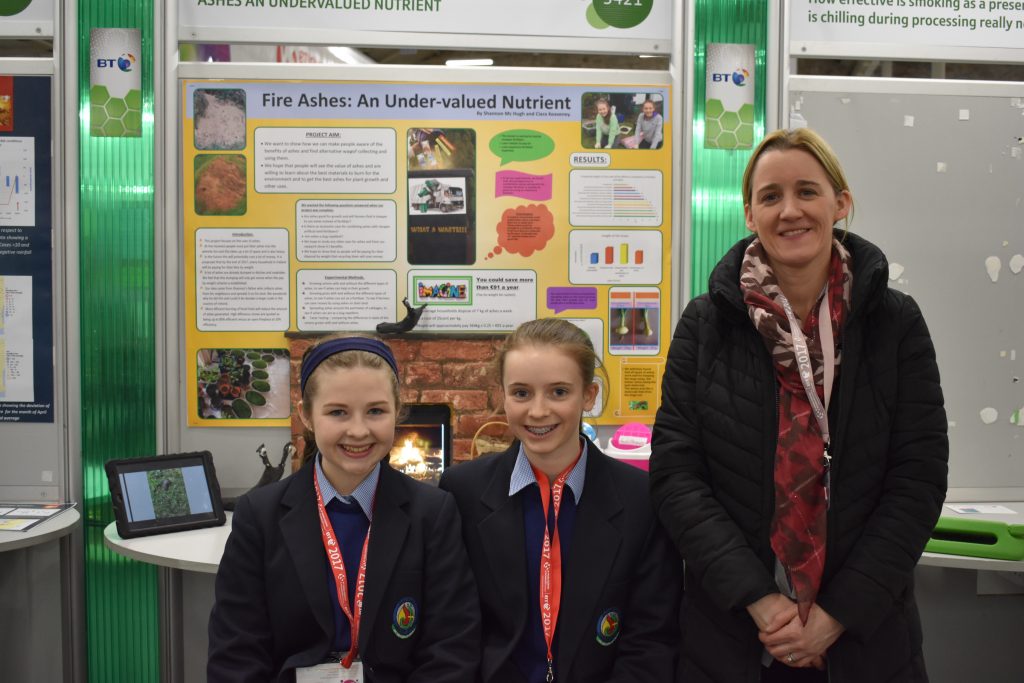
Tell me about your project?
A student noticed her father often spread ashes on the farmland to improve fertility and reduce waste, and decided to investigate this. An unfertilized field was divided into 4 sections with one section left to grow at its own pace, one fertilized with ashes, one with fertilizer and one with a combination of ash and fertilizer.
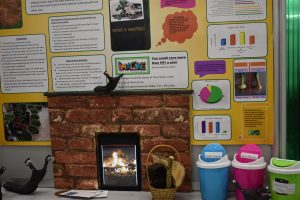
What were your findings?
Ashes improved fertility with a combination of peat and wood ash showing the most growth. Onions grown from ashes alone were sweeter based on a blind taste test in the school. Additionally this combination of ash also acted as an effective slug repellent.
What would you do differently next time?
If repeating the project we would like to be able to grow test plants outside for the entire year, as some had to be brought inside to stop them dying from frost.
To investigate the impact different vegetative cover has on attenuation of water in soils.
Caoilin O Meara, John Monaghan from Newtown School Waterford.

Tell me about your project?
We were looking for a natural solution to flooding rather than relying on dams and walls as containing flooding at one point can lead to overflow elsewhere. We investigated 3 types of soil in 2 areas. The soils examined were those from new ash forest, those from a classic old Irish forest and standard grassland and pasture soils. These were then dried out to examine how much water they held and subjected to drainage experiments as the speed of water run off is important in flooding scenarios.
What were your findings?
The humus in old Irish forest soil showed a mass loss of 80%, suggesting it absorbs a lot of water, whereas soil with little vegetative cover was quite compacted and showed little mass loss. The drainage experiment the humus, topsoil and subsoil of old Irish forestry had the best drainage speed to avoid flooding.
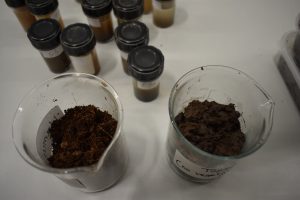
What would you do differently?
If doing this again we would like to be able to measure speed of water flow before and after rainfall, the amount of rainfall in a 24h period and the area of the catchment.
Ergonomic Planter.
Jack O Connor, Diarmuid Curtin from Desmond College Limerick.
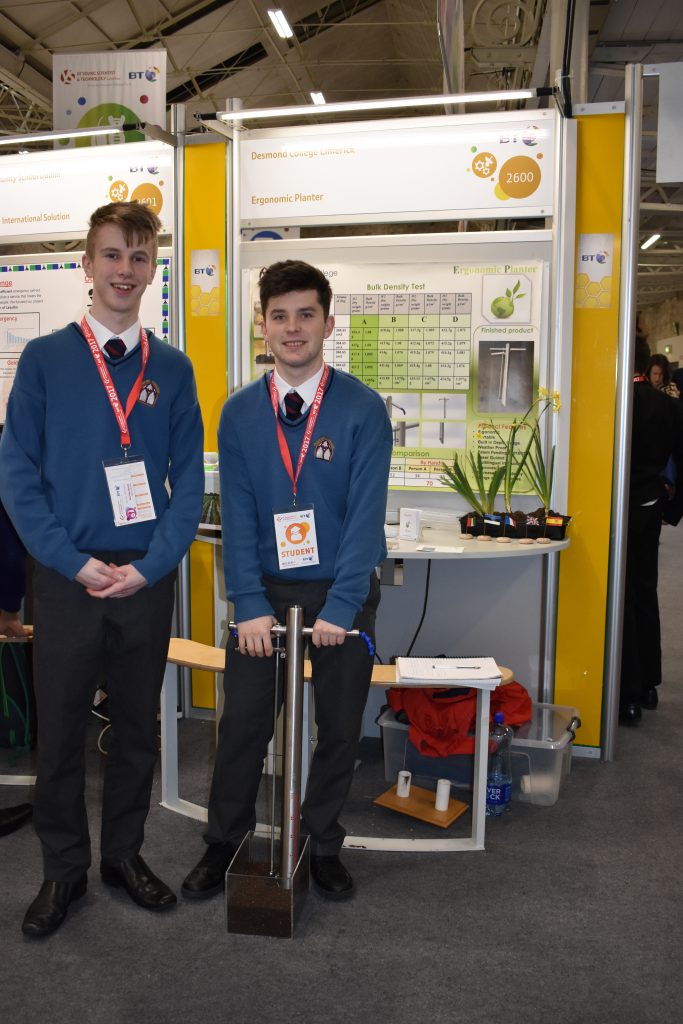
Tell me about your project?
This planter is mostly aimed at farmers in the developing world. As population and food demand increases farmers need to be able to keep up with demand or risk people starving. This planter allows users to plant with increased speed and safety.
What was the result?
After initially designing it in cardboard it was transplanted to steel. We later added a lazer to allow the farmer to accurately measure the distance between crops. The planter can be set to different depths depending on the crop in question. It also comes with a multi-lingual instruction book.

What are your plans for the planter?
It is mostly aimed at NGO’s and not-for-profit organisations assisting small farmers.
[/cs_text][x_author title=”About the Author” author_id=””][/cs_column][/cs_row][/cs_section][/cs_content]







